- Reviews
- Best Classic Cars
- Ask HJ
- How Many Survived
- Classic Cars For Sale
- Insurance
- Profile
- Log out
- Log in
- New account
Nissan Micra (1982 – 1992) Review
Nissan Micra (1982 – 1992) At A Glance



The Nissan Micra first appeared in concept form in 1981. Nissan unveiled the NX-01 at the Tokyo motor show. It was designed as a new 1.0-litre supermini, intended to slot in the range below the Cherry. The concept was praised at the time for its clean styling - a move towards European design, which alongside the Prairie had pundits speculating as to whether the cars were styled by Ital Design - but Nissan always denied this.
When the production Micra – known as the March in Japan – was first shown (almost unmodified from the NX-01) in 1982, it was considered a massive step forward. The Micra was light and easy to drive, and that made it a huge hit with young drivers. In the UK, it became the most popular car with driving schools, for very good reason, attracting new fans. It survived for ten years, about twice as long as the norm for a Nissan.
Model History
- October 1981: Nissan presents the NX-01 concept
- October 1982: Nissan March launched at the Tokyo Motor Show
- August 1983: Nissan launches the Micra in Europe
- March 1985: Nissan March Turbo launched in Japan
- March 1989: Nissan Micra receives its first facelift
- October 1989: Nissan Pike factory introduces Micra-based specials, starting with the Be-1
- October 1991: Nissan Figaro launched
- December 1992: Nissan March and Micra production ceases
October 1981
Nissan presents the NX-01 concept
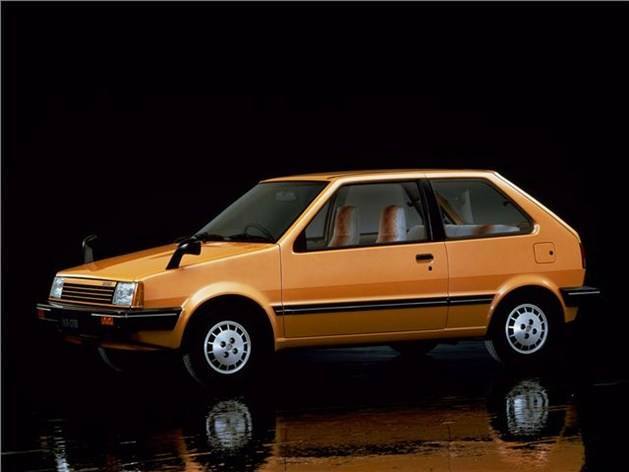
In 1981, Nissan unveiled the NX-01 concept at the Tokyo motor show. It was designed as a new 1.0-litre supermini, intended to slot in the range below the Cherry. The concept was praised at the time for its clean styling - a move towards European design, which alongside the Prairie had pundits speculating as to whether the cars were styled by Ital Design - but Nissan always denied this.
October 1982
Nissan March launched at the Tokyo Motor Show
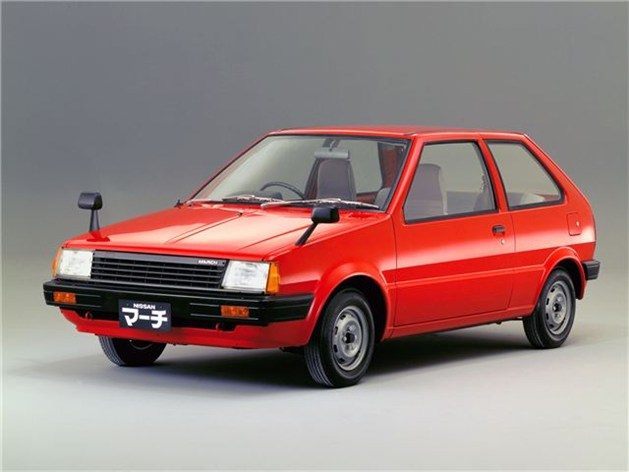
Given just how the NX-01 looked like a production-ready car, rather than a one-off concept, it was no surprise to see the real thing appear at the same motor show just a year later. The production car - called the Nissan March in Japan - was available in 0.9-, 1.0- and 1.2-litre form, and it proved to be a big hit in its home market straight out of the blocks.
August 1983
Nissan launches the Micra in Europe
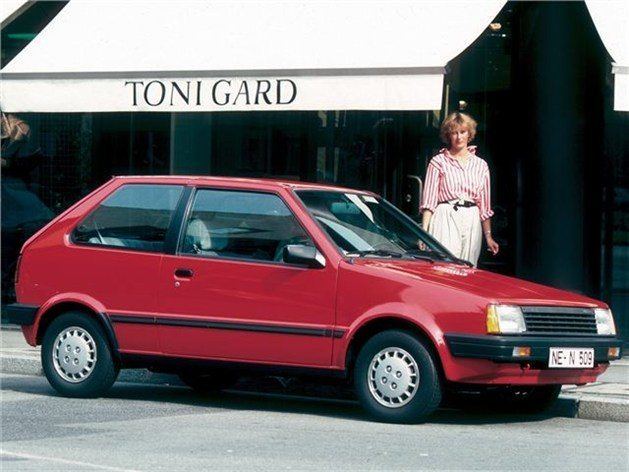
For its European launch in 1983, the Nissan March was renamed the Datsun Micra. It would retain the Datsun name for another year before adopting Nissan - a time when the entire range was renamed. When it went on sale in the UK, it repeated its Japanese success, picking up young buyers from the outset. Although smaller and more cramped than the principal opposition, the Micra stood out for its mechanical refinement, light controls and eager acceleration.
March 1985
Nissan March Turbo launched in Japan
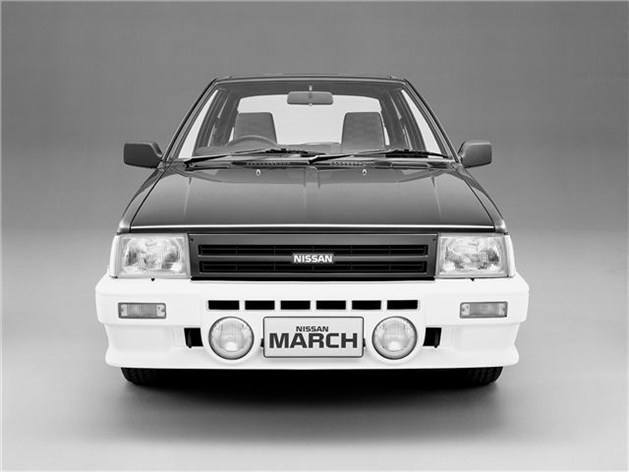
The 1985 Nissan March Turbo K10GFTI was the first of the quick Micras that we didn't seein the UK. It was a Japanese market-only car powered by a tax-friendly 1.0-litre turbocharged engine. In 1988, Nissan launched a follow-on 10,000-limited run version known as the Micra Superturbo (EK10GFR/GAR). The 1.0-litre turbo was upgraded to incorporate an advanced sequential supercharger and turbocharger that pumped out 108bhp at 6400rpm.
March 1989
Nissan Micra receives its first facelift
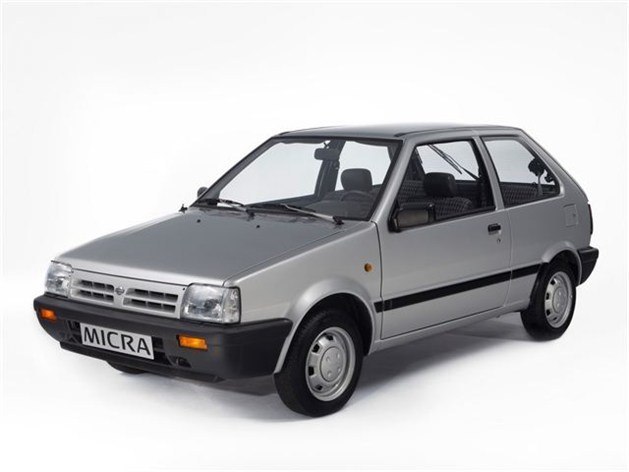
The Nissan Micra was treated to its first facelift. It was identified by a lightly revised front end, consisted of a deeper bumper, new headlamps and a new front grille. Inside, the Micra received new seats and instrument graphics, and it also saw the introduction of the larger MA12 1.2-litre engine that developed 59bhp. Most importantly, the facelift marked the arrival of a new five-door version.
October 1989
Nissan Pike factory introduces Micra-based specials, starting with the Be-1

The 1989 Nissan Be-1 was the first individually-styled rebodied March built by the Pike Factory and first shown in concept form in 1987. It was originally shown in 1985 as a concept (above), and such was the positive response, the company pushed it into production, as a derivative of the March. It was the first of four such more overtly retro spinoffs from the K10 Micra; the S-Cargo, Figaro and Pao. The Be-1 was sold without the Nissan name. and was designed to be a fashionable city car. It succeeded - and visually was a success, looking like a modern supermini almost 25 years on.
Whereas the Be-1 was a timeless looking K10-based design, the Pao was unashamedly Retro in all of its interior and exterior detailing. It was first shown in 1987, but went on sale in April 1989. The Pao's retro details included an optional textile canvas-top, and these are the most desirable versions today. Entire prodction run was sold out in three months after 51,657 were built.
The Nissan S-Cargo was a wonderfully styled (and named!) small van that was based on the K10 Micra and built by the Pike Factory. It was inspired by the Citroën 2CV van, and even featured a single spoke steering wheel. The S-Cargo was introduced at the Tokyo Motor Show in 1989, and went on sale the following year. Approximately 12,000 S-Cargos were built, and they have subsequently been exported all over the world as a popular 'speciality' delivery vehicle.
October 1991
Nissan Figaro launched
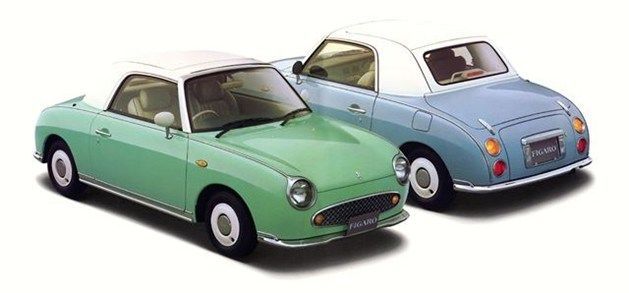
'Back to the Future', exclaimed Nissan at the launch of the Figaro at the Tokyo Motor Show. The Nissan K10-based car was styled with a deliberate nod to the company's classic cars, such as the Fairlady, and was available in four colours were: Topaz Mist, Emerald Green, Pale Aqua and Lapis Grey. The Figaro was luxuriously equipped, with leather seats, air conditioning, CD player and an opening fabric roof. 12,000 were eventually built, and prospective buyers had to enter a lottery to be able to buy one of these cars. A popular classic car today, with hundreds now grey imported to the UK.
December 1992
Nissan March and Micra production ceases
Driving Nissan Micra (1982 – 1992)
In 1983, a new wave of superminis was introduced, finally allowing this highly popular genre of cars to grow-up as their customers demanded more from their cars.
Nissan might have been an early entrant in the supermini field with the Cherry 100A, but that car had grown to such an extent during the 1970s that a new small car was slotted in beneath. That car was the Micra.
Classic road test: Nissan Micra
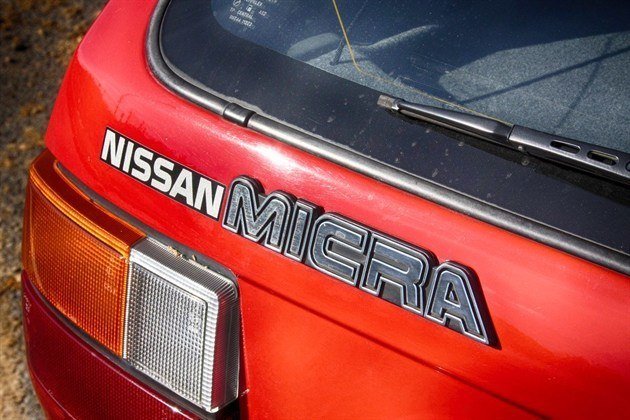
The Nissan Micra was not an enthusiast's choice, but it picked up a huge following nevertheless.
Draw up a list of important small cars of the 1980s, and as an enthusiast, you're probably unlikely to add the Nissan Micra. Given that its contemporaries included the Fiat Uno, Peugeot 205 and Austin Metro, we quite understand, but given a little more thought, we assert that the smallest Nissan should indeed be added. Back in the 1980s, the Micra ended up selling stack-loads in the UK, and found huge popularity as a driving school car - which in turn, means that many people of a certain age have fond memories of these little cars.
It's easy to forget how popular the Micra was back in the day - and in the UK, it was consistently the fourth best-selling supermini, behind the Metro, Fiesta and Nova.
When it went on sale in the UK in August 1983, the Micra was a welcome return to the supermini sector, which at the time was the fastest growing sector of the market. Although, when launched, the Datsun Cherry was seen as an alternative to the first generation superminis, such as the Renault 5 and Fiat 127, but it grew throughout the decade to such an extent that there was room beneath it for a new small car. The Micra was designed very much with European buyers in mind, so it boasted clean styling that distanced it from previous offerings. Drag co-efficient of 0.39 meant it saw off the Metro and Fiesta, but the new Peugeot 205 and Fiat Uno were miles better.
This wasn't a particular selling point, though. What mattered were low running costs and easy servicing from Nissan's large dealer network, both of which were on offer. But the headline story, which Nissan made great play of, was the excellent government fuel figures. How does 67.3mpg at a constant 56mph sound to you? Imagine what impact that made in 1983.
No wonder it sold well...
About the Nissan Micra
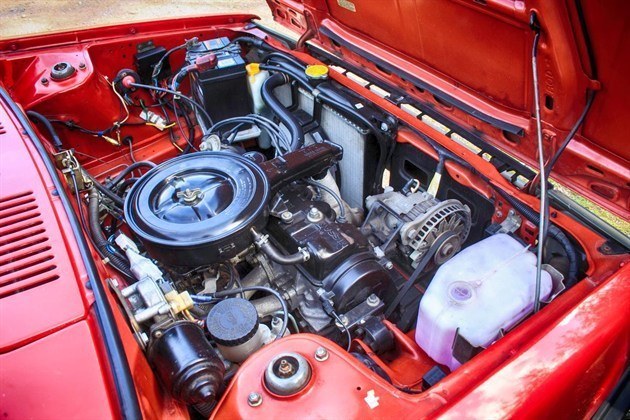
Single overhead cam MA10S engine is smooth and relatively punchy for its size.
The Nissan Micra's technical specification broke little new ground. Unlike its predecessor, which was a supermini pioneer when it was launched in 1970, the Micra is a very orthodox, but very well developed, package. Beneath that Ital Design-esque body, beats the heart of a well-engineered, but very conventional supermini - its 1.0-litre engine was initially offered in 50 and 55bhp forms, and was developed especially for the Micra. Later on, that was expanded to 1.2-litres. It's a lovely little power unit, with an aluminium cylinder block and crossflow head, and it features hemispherical combustion chambers, and incorporates a belt-driven overhead camshaft.
Elsewhere, it is classic supermini - so that means a transverse front engine, driving the front wheels through an end-on gearbox. Steering is by rack and pinion, and braking is by discs and drums - and as for suspension, that's also utterly conventional, with MacPherson struts up front, and a beam axle and coil springs at the rear. Against the unconventional Metro with its gas suspension and clever space-efficient interior, this all must seem a little on the unimaginative side, but for its target market, this simplicity was welcome.
On the road
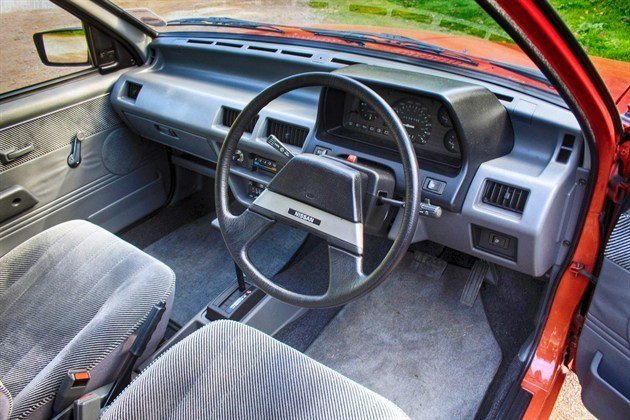
Interior is plasticky, but very functional and well-made. Unlike so many challengers in period, the Micra was also blessed with a good driving position and light steering.
Jumping into our Micra is a real timewarp experience. We don't just mean the swathes of grey patterned velour and matching plastic dashboard, but the smell. The pleasant odour - a combination of processed plastic and rubber - that one only associates with a new car waft over you as soon as you open the door, and transports you back to warm summer days in the late 1980s. We're being seduced by the industrial fragrance of Nissan UK's 1988 heritage Micra - one which was found at auction back in 2011 after notching up a mere 3600 miles.
When we jump in, that total is now nudging 4000. Putting aside the car's 'newness', there's still plenty to impress about the Micra when first jumping in. The driving position is particularly comfortable for a supermini - the thin-rimmed steering wheel is positioned correctly, directly ahead of the driver, and nicely upright. The pedals are also nicely positioned, and spaced correctly in the generously proportioned footwell.
The controls are typically Japanese in their set-up - the heating and ventilation is handled by sliders, while the indicators and wipers are overseen by a pair of column stalks correctly laid-out for RHD (you signal with the right; wipe with the left). There's a pop-out sunroof, and push-button radio, and very little else. But the dominating impression is that it's all very pleasant, well-trimmed and nicely made. The interior's also exceptionally airy, thanks to slim pillars and the additional light that glass sunroof lets in. Sadly, it misses the high-backed tombstone seats of the earliest cars.
The engine starts cleanly, bursting into life eagerly - a single pump of the throttle to prime the automatic choke, and you're away. Ours is fitted with an automatic transmission, which works beautifully smoothly once drive is engaged. Step-off is more lively than you'd expect, but once underway, acceleration is leisurely, with the engine churning noisily if you push it harder to get up to the national limit. But once up to cruising speed - 50mph seems to be this car's natural cruising gait - it's unfussed and happy enough, despite low gearing.
Ride quality is actually very good on undemanding roads - with soft primary ride. The damping isn't up to scratch, especially when loaded up with two or more adults, and as the road surface deteriorates, the bounciness increases. At all speeds, steering is light, and lacks road feel. So once you're on a country lane, you'll lack confidence in the bends because you simply can't feel what's going on. But going fast in corners is the last thing you'll want to do, as the Micra seriously lacks dynamic talent, more often than not feeling all at sea.
But if you're not a driver, then relaxing, taking things easy, and driving along casually won't be too much of a chore thanks to that soft, wallowy ride. Shame though really, as small cars should be fun, zipping through the curves, and nipping in and out of those challenging city switch backs.
The HJClassics Verdict
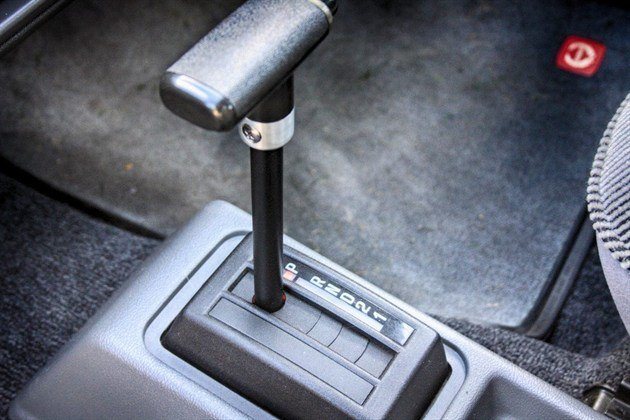
Three-speed auto was a popular transmission choice with older buyers and city dwellers.
The Nissan Micra is an inoffensive and capable small car that was bought in huge numbers throughout the 1980s - and as a consequence, naturally lends itself to the role of nostalgia wagon for many people. When we had the car on test, it attracted a surprising amount of attention from people whenever we stopped, and it wasn't all in admiration for the condition of this example - the Micra K10 is disappearing from our roads quite quickly now, and a nice example like this is beginning to stand out now.
But what of the car itself? In a nutshell if you're looking for a small car that's fun to drive and full of joie de vivre, you'll want to look elsewhere. The steering's too woolly, and the handling too vague to give anything back to the young and keen. However, if you're looking for a slice of nostalgia that's cheap to run, easy to drive, and can be serviced for buttons, the Micra would fit the bill nicely.
This ease of use and pleasantness to tool around in for more casual drivers is the reason why this car was picked up by so many driving schools back then. But it wasn't the only one. Nissan's excellent build quality and peerless reliability will have made this a near compelling choice for those looking for a working car to depend on. In this was your first driving experience back in the 1980s, chances are, driving one today will be a very enjoyable experience.
In 1983, the car magazine road testers gave the Micra a reserved thumbs-up, concluding that it was probably set fair to sell well. How right they were...
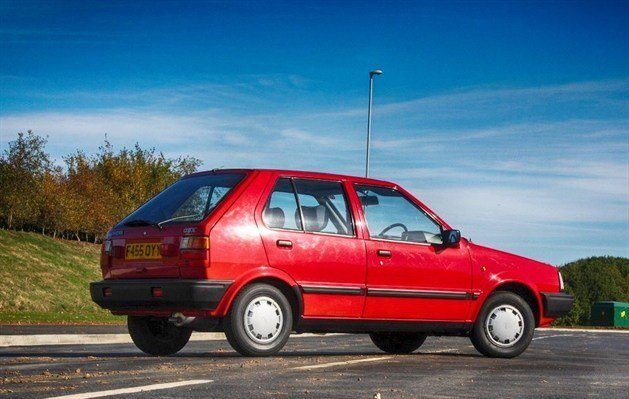
Nissan Micra (1982 – 1992) Buying Guide
Good
- Small hatchbacks 12' 4" long by 5' 1" wide and weighing from just 660kg.
- Engines were 988cc with 50bhp or 1,235cc with 60bhp. Amazingly reliable until they get old. Could be run on a shoestring. Cambelt replacement is a cheap £60 job, but best to replace camshaft end seal and water pump at the same time.
- 'Colette' was a pretty two two derivation.
- Facelifted March 1989, designated Series 00K10.
- Catalysed engines introduced January 1992, deignated Series K10 without the 00.
- API used to supply good quality second-hand replacement engines for £455 plus VAT (0500 830530). www.apiengines.com, but not much point by 2007.
Bad
- Bodies start to rattle after 4 years.
- Very light build makes occupants vulnerable in a crash.
- Scratches rust quickly.
- Failed engines rarely worth replacing from 2005 on, even at API's low prices, unless the car is in spectacularly good condition and worth preserving.
- High eight point death rate in Govt accident stats for this model.
Watch
- Far too many suffer from neglected servicing and 'short run syndrome'. Elderly owners simply forgot to service them.
- Cambelts need to be replaced regularly and camshaft end seals at the same time. Waterpumps eventually go and either snap the cambelt or lead to severe overheating which can wreck the engine.
- Mayonnaise under oil filler cap may be condensation, but mayonnaise under the radiator cap is a sign of a head problem.
- If the engine overheats on the test drive, its cylinder head is warped.
- Requires coolant replacement with special Nissan coolant (or Trigard) every two years or engine will corrode internally.
- After high mileage, will start to burn oil and need either new valve stem seals or a replacement engine. If engine has been replaced or reconditoned it may be dodgy. Any 'rumbling' from the bottom of the engine is likely to be the water pump about to fail (allow £150-£200 for new water pump, timing belt, camshaft end seal).
- A smell of petrol under the bonnet usually signifies fuel pump diaphragm failure, leaking neat petrol into the oil sump leading to severe engine wear and possibly even an explosion (allow £100 for new fuel pump plus oil and filter change).

.JPG?width=640&height=426&rmode=crop)
.JPG?width=640&height=426&rmode=crop)
.JPG?width=640&height=426&rmode=crop)
.JPG?width=640&height=426&rmode=crop)
.JPG?width=640&height=426&rmode=crop)
.JPG?width=640&height=426&rmode=crop)
.JPG?width=640&height=426&rmode=crop)
.JPG?width=640&height=426&rmode=crop)
.JPG?width=640&height=426&rmode=crop)
.JPG?width=640&height=426&rmode=crop)
.JPG?width=640&height=426&rmode=crop)
.JPG?width=640&height=426&rmode=crop)
.JPG?width=640&height=426&rmode=crop)